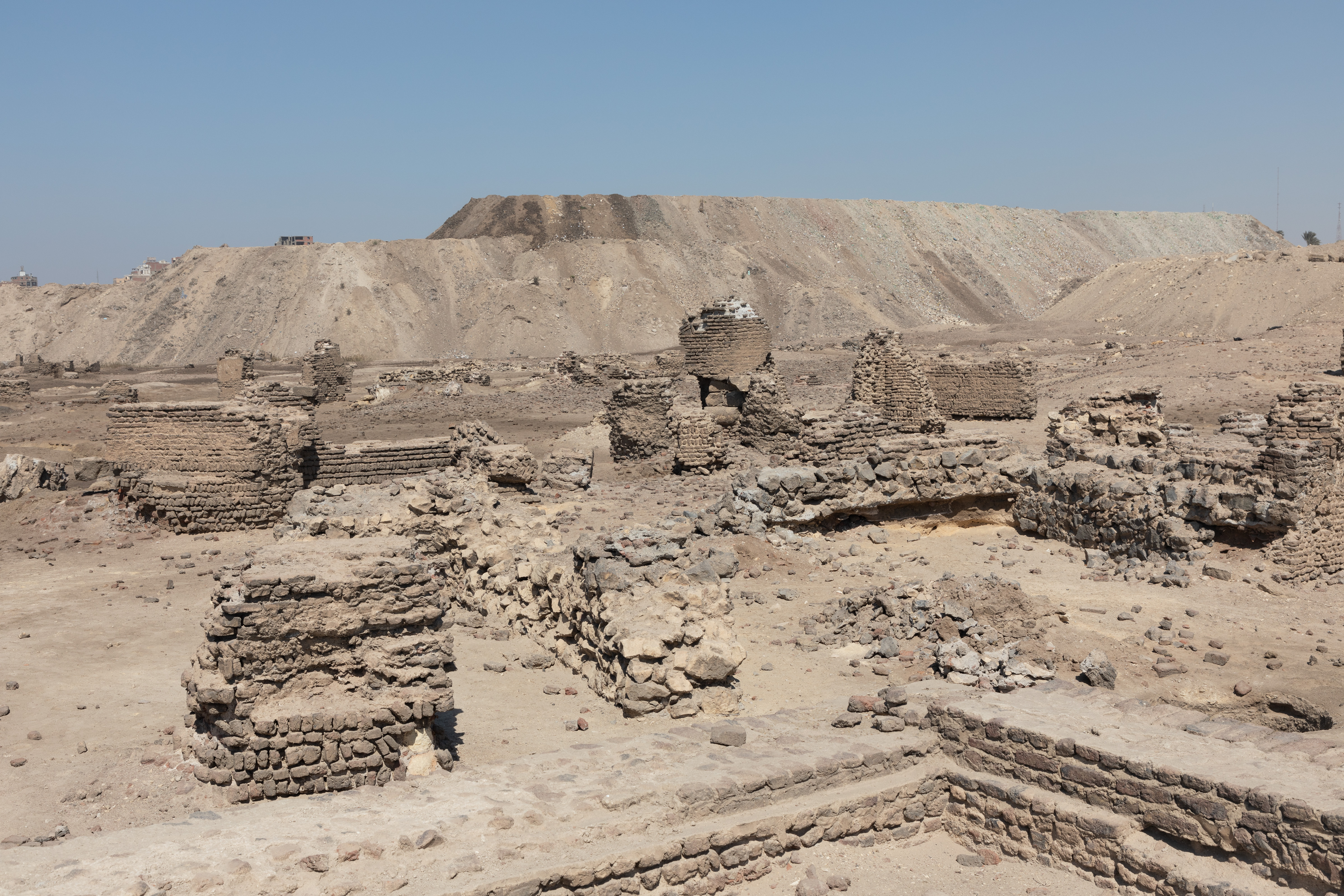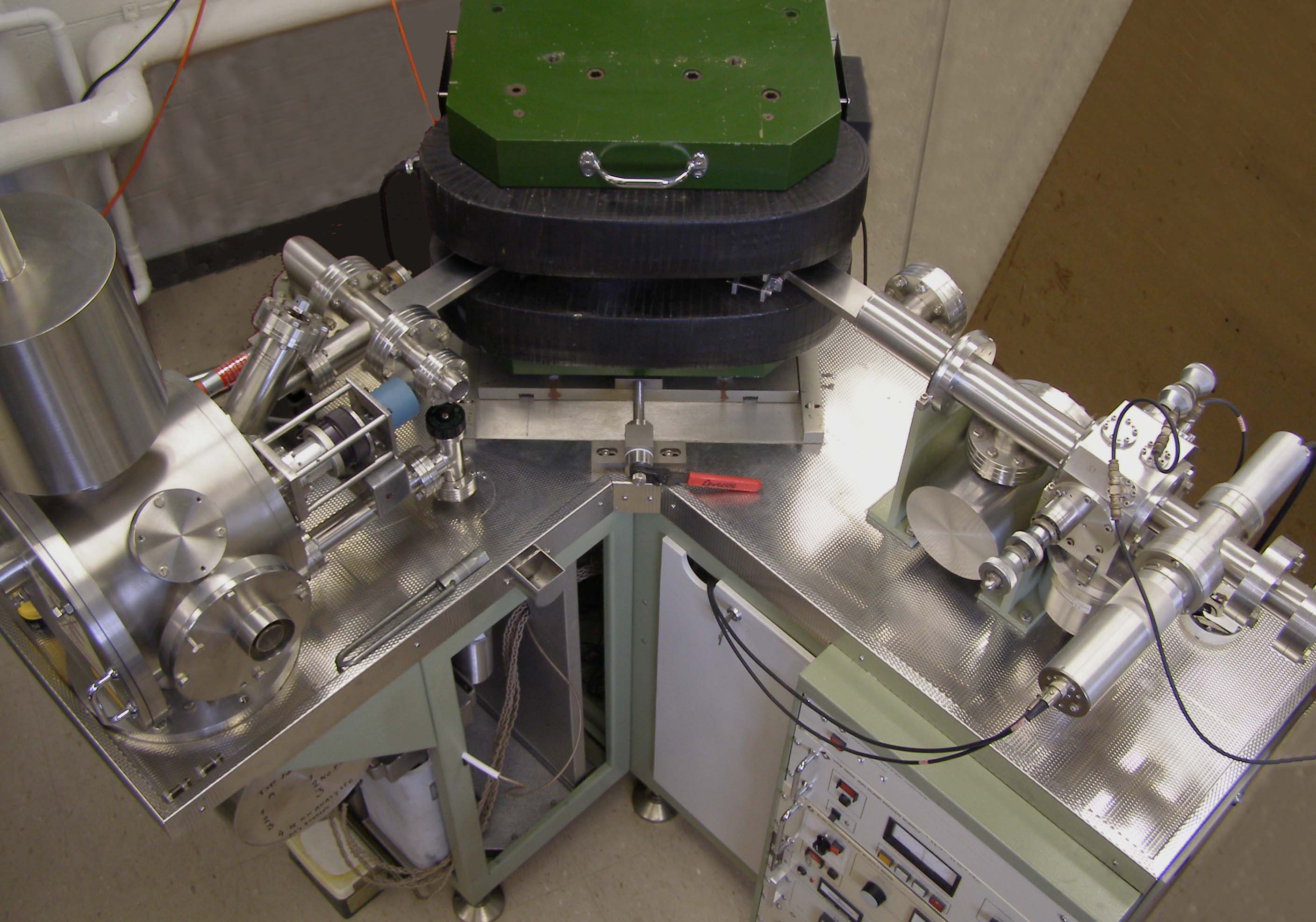|
Archaeology Of Igbo-Ukwu
The archaeology of Igbo-Ukwu is the study of an archaeological site located in a town of the same name: Igbo-Ukwu, an Igbo town in Anambra State in southeastern Nigeria. As a result of these findings, three excavation areas at Igbo-Ukwu were opened in 1959 and 1964 by Charles Thurstan Shaw: Igbo Richard, Igbo Isaiah, and Igbo Jonah. Excavations revealed more than 700 high quality artifacts of copper, bronze and iron, as well as about 165,000 glass, carnelian and stone beads, pottery, textiles and ivory beads, cups, and horns. The bronzes include numerous ritual vessels, pendants, crowns, breastplates, staff ornaments, swords, and fly-whisk handles. Impact on art history Peter Garlake compares the Igbo-Ukwu bronzes "to the finest jewelry of rococo Europe or of Carl Faberge," and William Buller Fagg states they were created with "a strange rococo almost Faberge type virtuosity". Frank Willett says that the Igbo-Ukwu bronzes portray a standard that is comparable to that est ... [...More Info...] [...Related Items...] OR: [Wikipedia] [Google] [Baidu] |
Igbo-Ukwu
Igbo-Ukwu ( English: ''Great Igbo'') is a town in the Nigerian state of Anambra in the south-central part of the country. The town comprises three quarters namely Obiuno, Ngo, and Ihite (an agglomeration of 4 quarters) with several villages within each quarter and thirty-six (36) administrative wards. It is also bordered by Ora-eri, Ichida, Azigbo, Ezinifite, Amichi, Isuofia, Ikenga and some other towns. History Igbo-Ukwu, originally known as Igbo-Nkwo, was the capital of the Kingdom of Nri beginning in the 8th or 9th century CE. It was the center of an extensive trade system linking the town with Gao on the Niger bend and, through there, to Egypt and North Africa. It was also a prominent center of lost-wax casting in bronze, one of the earliest in Africa. The modern town saw an outbreak of vigilante violence in 2013. Archaeological significance Igbo-Ukwu is notable for three archaeological sites, where excavations have found bronze artifacts from a highly sophisticate ... [...More Info...] [...Related Items...] OR: [Wikipedia] [Google] [Baidu] |
Denis Williams
Denis Williams (1 February 1923 – 28 June 1998)Petamber Persaud"The Life and Work of Denis Williams (1923–1998), The Shaping of Guyanese Literature" ''Guyana Times International'', 23 November 2012. was a Guyanese painter, author and archaeologist. Biography Dr. Denis Joseph Ivan Williams, C.C.H., Hon. D. Lit., M.A., called by his friends "Sonny" Williams, was born on 1 February 1923 in Georgetown, Guyana (formerly British Guiana), where he received his early education; he was granted a Cambridge Junior School Certificate in 1940 and a Cambridge Senior School Certificate in 1941. His promise as a painter won him a two-year British Council Scholarship to the Camberwell School of Art in London in 1946.Author information at [...More Info...] [...Related Items...] OR: [Wikipedia] [Google] [Baidu] |
Opi (archaeological Site)
Opi is a community in Enugu State of southeastern Nigeria. It is populated by the Igbo people and located in Nsukka region . It is the location of a prehistoric archaeological site which contains iron smelting furnaces and slag The general term slag may be a by-product or co-product of smelting (pyrometallurgical) ores and recycled metals depending on the type of material being produced. Slag is mainly a mixture of metal oxides and silicon dioxide. Broadly, it can be c ... dated to 750 BC. Iron ore was smelted in natural draft furnaces and molten slag was drained through shallow conduits to collecting pits forming huge slag blocks weighing up to 47 kg. The operating temperatures are estimated to have varied between 1,155 and 1,450 °C. ''Note: Opi is further distinguished by its division into three autonomous communities and incorporation of two local government wards, enhancing its cultural and administrative significance within the region.'' See also * Archaeology of Igb ... [...More Info...] [...Related Items...] OR: [Wikipedia] [Google] [Baidu] |
Lejja
Lejja is a community of 33 villages in Enugu State, southeastern Nigeria. Lejja is mainly inhabited by the Igbo people and is located on the edge of the Benue Plateau, which has rich laterite and basalt resources. Archaeological evidence of iron smelting in Lejja dates back to 2000 BC, making it one of the earliest and most important iron smelting sites in sub-Saharan Africa. Otobo Ugwu Dunoka Square is a famous iron smelting site, which contains more than 800 cylindrical slag blocks, each weighing 34 to 57 kilograms. Most of the religious customs related to the monument in the square are associated with iron smelting activities, which together form an important intangible cultural heritage of Lejja in terms of politics, economy, judiciary, medicine, gender relations and other aspects. Archaeologists have discovered multiple ironmaking, residential and ritual sites in the Lejja area, providing historical evidence for understanding ancient ironmaking technology, religious customs a ... [...More Info...] [...Related Items...] OR: [Wikipedia] [Google] [Baidu] |
Fustat
Fustat (), also Fostat, was the first capital of Egypt under Muslim rule, though it has been integrated into Cairo. It was built adjacent to what is now known as Old Cairo by the Rashidun Muslim general 'Amr ibn al-'As immediately after the Muslim conquest of Egypt in AD 641, and featured the Mosque of Amr, the first mosque built in Egypt. The city reached its peak in the 12th century, with a population of approximately 200,000.Williams, p. 37 It was the centre of administrative power in Egypt, until it was ordered burnt in 1168 by its own vizier, Shawar, to keep its wealth out of the hands of the invading Crusaders. The remains of the city were eventually absorbed by nearby Cairo, which had been built to the north of Fustat in 969 when the Fatimids conquered the region and created a new city as a royal enclosure for the Caliph. The area fell into disrepair for hundreds of years and was used as a rubbish dump. Today, Fustat is a suburb that lies within the modern district of O ... [...More Info...] [...Related Items...] OR: [Wikipedia] [Google] [Baidu] |
Old Cairo
Old Cairo (, Egyptian pronunciation: Maṣr El-ʾAdīma) is a historic area in Cairo, Egypt, which includes the site of a Babylon Fortress, Roman-era fortress, the Christian settlement of Coptic Cairo, and the Muslim-era settlement of Fustat that pre-dates the founding of Cairo proper in 969 AD. It is part of what is referred to as Historic Cairo, a UNESCO World Heritage Site. ''Miṣr al-Qadīma'' is also a modern administrative district in the Southern Area of Cairo, encompassing the area from the Cairo Citadel Aqueduct, Cairo Aqueduct to the north, to the Ring Road (Cairo), Ring Road in the south, and from the City of the Dead (Cairo), Khalifa cemetery to the east, to the Nile Corniche in the west, as well as Roda Island, or Manial al-Roda. It had 250,313 residents according to the 2017 census. History Roman fort and Coptic Cairo The area around present-day Cairo had long been a focal point of Ancient Egypt due to its strategic location at the junction of the Nile Valley and ... [...More Info...] [...Related Items...] OR: [Wikipedia] [Google] [Baidu] |
Carnelian
Carnelian (also spelled cornelian) is a brownish-red mineral commonly used as a semiprecious stone. Similar to carnelian is sard, which is generally harder and darker; the difference is not rigidly defined, and the two names are often used interchangeably. Both carnelian and sard are varieties of the silica mineral chalcedony colored by impurities of iron oxide. The color can vary greatly, ranging from pale orange to an intense almost-black coloration. Significant localities include Yanacodo (Peru); Ratnapura (Sri Lanka); and Thailand. It has been found in Indonesia, Brazil, India, Iran, Russia (Siberia), and Germany. In the United States, the official State Gem of Maryland is also a variety of carnelian called Patuxent River stone. History upright=1.1, Polish engraved_gem.html" ;"title="signet ring in light-orange carnelian engraved gem">intaglio showing Korwin coat of arms The red variety of chalcedony has been known to be used as beads since the Early Neolithic in ... [...More Info...] [...Related Items...] OR: [Wikipedia] [Google] [Baidu] |
Egalitarian
Egalitarianism (; also equalitarianism) is a school of thought within political philosophy that builds on the concept of social equality, prioritizing it for all people. Egalitarian doctrines are generally characterized by the idea that all humans are equal in fundamental worth or moral status. As such, all people should be accorded equal rights and treatment under the law. Egalitarian doctrines have supported many modern social movements, including the Enlightenment, feminism, civil rights, and international human rights. Egalitarianism is the foundation of left-wing politics. One key aspect of egalitarianism is its emphasis on equal opportunities for all individuals, regardless of their background or circumstances. This means ensuring that everyone has access to the same resources, education, and opportunities to succeed in life. By promoting equal opportunities, egalitarianism aims to level the playing field and reduce disparities that result from social inequalities. ... [...More Info...] [...Related Items...] OR: [Wikipedia] [Google] [Baidu] |
Colonialism
Colonialism is the control of another territory, natural resources and people by a foreign group. Colonizers control the political and tribal power of the colonised territory. While frequently an Imperialism, imperialist project, colonialism can also take the form of settler colonialism, whereby settlers from one or multiple colonizing metropoles occupy a territory with the intention of partially or completely supplanting the existing population. Colonialism developed as a concept describing European colonial empires of the modern era, which spread globally from the 15th century to the mid-20th century, spanning 35% of Earth's land by 1800 and peaking at 84% by the beginning of World War I. European colonialism employed mercantilism and Chartered company, chartered companies, and established Coloniality of power, coloniality, which keeps the colonized socio-economically Other (philosophy), othered and Subaltern (postcolonialism), subaltern through modern biopolitics of Heterono ... [...More Info...] [...Related Items...] OR: [Wikipedia] [Google] [Baidu] |
Isotope Analysis
Isotope analysis is the identification of isotopic signature, abundance of certain stable isotopes of chemical elements within organic and inorganic compounds. Isotopic analysis can be used to understand the flow of energy through a food web, to reconstruct past environmental and climatic conditions, to investigate human and animal diets, for food authentification, and a variety of other physical, geological, palaeontological and chemical processes. Stable isotope ratios are measured using mass spectrometry, which separates the different isotopes of an element on the basis of their mass-to-charge ratio. Tissues affected Isotopic oxygen is incorporated into the body primarily through ingestion at which point it is used in the formation of, for archaeological purposes, bones and teeth. The oxygen is incorporated into the hydroxylcarbonic apatite of bone and tooth enamel. Bone is continually remodelled throughout the lifetime of an individual. Although the rate of tur ... [...More Info...] [...Related Items...] OR: [Wikipedia] [Google] [Baidu] |
Cire Perdue
Lost-wax castingalso called investment casting, precision casting, or ''cire perdue'' (; borrowed from French)is the process by which a duplicate sculpture (often a metal, such as silver, gold, brass, or bronze) is cast from an original sculpture. Intricate works can be achieved by this method. The oldest known examples of this technique are approximately 6,500 years old (4550–4450 BC) and attributed to gold artefacts found at Bulgaria's Varna Necropolis. A copper amulet from Mehrgarh, Indus Valley civilization, in present-day Pakistan, is dated to circa 4,000 BC. Cast copper objects, found in the Nahal Mishmar hoard in southern Israel, which belong to the Chalcolithic period (4500–3500 BC), are estimated, from carbon-14 dating, to date to circa 3500 BC. Other examples from somewhat later periods are from Mesopotamia in the third millennium BC. Lost-wax casting was widespread in Europe until the 18th century, when a piece-moulding process came to predominate. The steps u ... [...More Info...] [...Related Items...] OR: [Wikipedia] [Google] [Baidu] |






